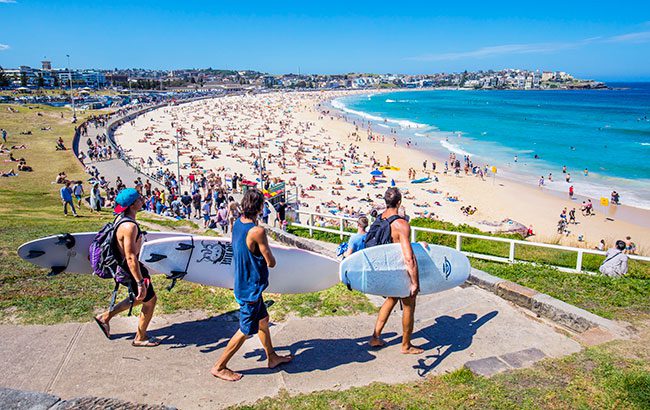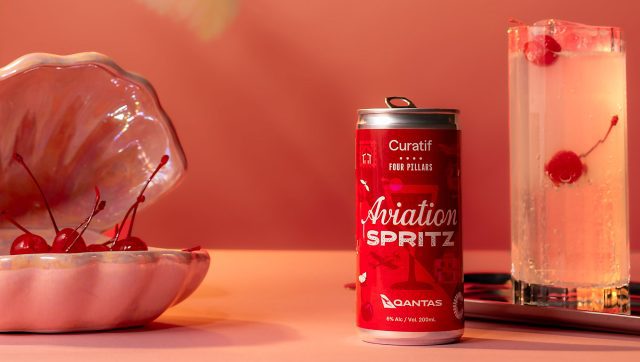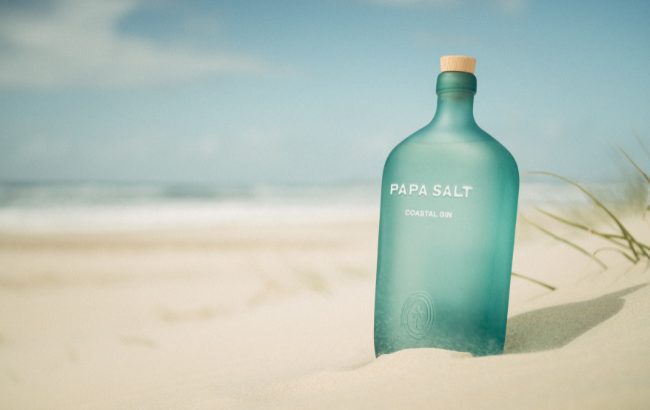How can Australian spirits win at home and away?
By Rupert HohwielerAustralia’s operating environment may make it difficult for homegrown spirits to win domestically and internationally, but it’s certainly not impossible.

*This feature was originally published in the September issue of The Spirits Business magazine.
The constant focus on excise tax and talk around a cost-of-living crisis might be making a lot of negative noise in Australia’s spirits industry, but there is still plenty of potential for the country’s spirits makers to make a mark on home soil.
In 2024, the spirits market in Australia was worth more thanUS$4 billion, according to IWSR data. The forecast for all spirits in the country is expected to slightly grow at a compound annual growth rate of 1%, in both value and volume from 2024 to 2029, and again from 2029 to 2034.
In Australia there’s been an enormous boom in domestic craft spirits, says Matt Jones, co-founder of Four Pillars, citing his gin brand as a leader of that explosion. But, he says: “Australia is a tough environment because you’ve got a relatively small population of consumers, and it’s a reasonably finite market with a very big tax regime, which I see as a big speed bump that as a business you’ve got to get over. But within that, there’s also the opportunity and appetite to do different and interesting things.” For Jones, Australian brands need to be clearer about why they deserve a spot on the shelf, with space being at more of a premium. “There are probably too many brands that think they can go national and then go international,” he says. “But there’s always room for something different and something better.”
In Australia, inflation has increased the price of spirits, alongside the biannual spirits tax hikes (the world’s third-highest rate for spirits tax), but there are strong city markets with large consumer bases. “Particularly if you look at Sydney and Melbourne,” Jones continues, “you’ve got such strong bar scenes, such strong restaurant dining, food and drink hospitality scenes. Both are worth around six million in population each, so they’re big cities to build brands in, but if your opportunity is creativity, to do things differently, then the job isn’t finished when you build the distillery and create the liquid; you need to finish the job and build the brand.” Jones points out one of the macro themes hitting craft distillers hard is a return to bigger global brands, especially with gin, which has softened in Australia. “You’ve seen people having less money in their pocket and wanting to prioritise spending on travel and experiences. So more tickets to see Taylor Swift and fewer boutique craft gins for their back bar at home,” Jones adds.
Artificially low price
Charlie Maas of Papa Salt – a coastal-inspired gin from Byron Bay that he co-founded with actor Margot Robbie and friends – says the brand has to keep its price low in Australia to compete. “We have to do a lot of things. We support the on-trade as much as we can because we want Australians to like the product and be proud of it, but we have no illusions that we’re going to make money selling gin in Australia.”
Like Jones, Maas sees a big opportunity in the domestic on-trade, where brands can support local venues. “People want to drink local. There’s an iconic Australian restaurant called Gimlet in Melbourne where they sell around 1,000 gimlets a week. They use Geraldton wax (a local botanical) in the cocktail that gives it local provenance, but they’re also using Tanqueray Ten as the gin. I asked my distributor ‘how do we get into the Gimlet?’” Outside of Australia’s main retailers (Endeavour, Dan Murphy’s, and Coles Group) where it can be tough to compete against bigger international brands who can offer better pricing, Maas counters that in the on-trade “there’s a lot of room to grow, to build a gin business, or any business, and to also help the on-trade offer something that you can’t get at home”.
Matt Sanger, co-founder of ready-to-drink (RTD) brand Curatif Cocktails, has been able to ride the ‘drink less but better’ movement that’s crept into Australia, and the rise of RTDs. The brand makes premium canned cocktails that, as a result, come at a higher ABV and price. “It’s moving into ‘let’s have a full-expression cocktail’ rather than ‘something that’s got some passion fruit and some vanilla in it and reminds me of bad decisions’,” he says.

Curatif has collaborated with big brands such as Appleton Estate and Tia Maria, which Sanger describes as a win-win situation. “There’s no disadvantage to being called out as an ingredient of a cocktail if the cocktail is great, so we get a lot of outreach from brands at all ends of the spectrum in relation to commercial size,” he explains.
According to a Mandala report, Australian spirits could reach AU$1 billion (US$653 million) in annual exports by 2035, if the government freezes the twice-yearly spirits tax hike. While the tax has been central in creating a perfect storm for the nation’s spirits industry, there are other challenges. Sanger suggests a bigger challenge is around the questions of “How do we make a great product? And how do we go about communicating that in an effective way?”
Curatif amplifies visibility with partnerships at Marvel Stadium in Brisbane with the AFL and on board Quantas, where it has created canned cocktails for the airline. “That’s sort of opportunity and challenge mixed up, which is, you’ve done all this work on making a great product, so how do you actually get it into people’s hands?”
Rare opportunity
One brand that’s caught the eye of a big gun is Never Never, a gin from New South Wales. “It was certainly one of those rare opportunities,” recalls co-founder Sean Baxter about the moment when Asahi Beverages came knocking on the door. The brand was acquired by Asahi in May 2024. At the time of the acquisition, Never Never co-founder George Georgiadis said that would help the brand realise its vision to “grow Australia’s gin market, where around 80% of the gin Australians drink is imported – despite Australia being home to some absolutely cracking gin brands”.
Baxter confirms saturation is a challenge: “There are only so many gin consumers here when it comes to how many times you can slice up the pie. When more gin distillers come into the category, the pie becomes smaller for everybody, right? Some bigger brands will need to adjust for that, and other smaller brands will have to manage their expectations when it comes to how quickly they grow.”
Talking about Asahi’s impact, he says: “A couple of years ago, we were making people redundant then last year we went from 10 full-time workers to 30, and we’re able to build our business in South Australia.”
Asahi’s involvement was a welcome opportunity for the brand to start addressing some of its challenges, such as packaging and transitioning from a 500ml to 700ml bottle.
“I don’t think we would have been able to do that without that partnership,” Baxter continues. “That was certainly a pretty expensive exercise. [The deal] is still very early days, and we’re still having to pull through a lot of old stock at retailers, but early doors the signs are very positive. It allowed us to bring our net price down, become a little bit more competitive on the shelf – all things in an economy where there’s a lot of price-point pressure and a lot of customers seeking value.”
Never Never makes gins with pretty innovative botanicals such as oyster shells and Grenache grapes (with an expression called ‘Ginache’) to sit alongside its flagship triple-distilled juniper. For Ginache, Australia is home to an educated wine audience and the gin can tap into this. Baxter dubs these types of wine-inspired gins as Australia’s “version of sloe gin”, and an example of how Australian spirits can distinguish themselves from the rest and use local ingredients as a strong point of difference.
Four Pillars and its Shiraz gin is also a pioneer in this regard. Addressing Australia’s ability to innovate more freely than other nations, and with regional ingredients like wine grapes, Baxter says: “We’ve got some really relaxed regulations around spirits definitions. There’s a lot of freedom with how we make not only gin, but whisky and brandy and all sorts of other things. We do have opportunity there.”
Starward is a brand that’s grasped this opportunity. Like Four Pillars, the Melbourne-based whisky has paved the way as a successful Australian spirit, and has cultivated a longstanding relationship with Diageo, having received investment from the drinks giant’s now-defunct Distill Ventures business.
Founder David Vitale has previously spoken about his goals of becoming a top-five global world whisky brand. It attracts acclaim with whisky finishes in Australian red wine barrels and ginger beer casks. “You can shoot a cannon through the regulation, it’s really exciting,” Vitale says of the freedom he’s able to play with. “That would not be allowed to be called Scotch in Scotland because the ginger is a predominant flavour, which isn’t part of the repertoire of Scotch profiles.”
This means many Australian spirits don’t come with the baggage that some traditional producers have to carry. Craft Australian spirits face a unique challenge, however, which Vitale contrasts with the situation that craft beer was able to take advantage of: “Unlike craft beer, where you could quite compellingly argue that institutional beer was broken and craft beer was more flavourful and interesting, what’s broken in spirits?” he asks. The mainstream international spirits and whiskies that Starward competes against are well-crafted and mostly excellent products, so the job of an Australian spirit, Vitale says, is to be “really interesting and compelling to drinkers, and get them to move from something that’s great to another thing that’s great, but with just a little bit more to them that they can identify with”.
Play to your strengths

Leveraging home advantage is something Four Pillars has perfected with its gins. The brand uses native Australian lemon myrtle as one of its base botanicals, separating itself from the classic London Dry and those brands that typically tend to use coriander seed and citrus peel. This – along with the brand’s Shiraz and Olive Leaf expressions – have almost set the tone of what a modern Australian gin can be. “You’ve got to play to your strengths,” asserts Jones. “If we play to what our country is rightfully famous for, then we’ve got a much better chance of success than if we choose to play to someone else’s strengths.” Jones feels as though Australian gin, and spirits, are at their best when trading off what the consumer around the world thinks of when they think of Australia. “We’re not world famous as a gin producer, but then again neither is Japan, and one of the fastest-growing gin brands in the world is [Suntory-owned] Roku. Italy isn’t either, but one of the strongest gin brands in the world is [Pernod Ricard-owned] Malfy.”
Another advantage Australian spirits producers have is their close proximity to Asia, observes Tom Baker, founder of coffee liqueur Mr Black. Even though Australia’s distance from major export markets causes problems with travel time and immense costs (especially in gin with sourcing juniper from Europe), Baker believes the easier access to Asia can be helpful.
He says: “Our proximity to Asia means we get glass bottles and caps. You go to Texas and they’ll have the same complaints about what they can’t get. Everyone’s got problems. Australia has this great advantage with Asia and Southeast Asia, for sourcing both ingredients or raw materials quite cheaply to make your product.”
Mr Black is also another example of an Australian success story, sold by Baker to Diageo in 2022, and arguably now the pre-eminent coffee liqueur brand. While Diageo has supported the brand’s expansion around the globe, Australia is still its second most important market behind the US.
“It’s our home market, it’s obviously going to be important,” he says. “Taxation is such a drain on the success of spirits in Australia, though, that it makes it a hard market for local producers.”
Baker says an upside is Australia’s retailers, which he praises as great to work with. “We’ve got very large retailers that kind of [hold] half the market together – Coles, Woolworths, and Endeavour. We’re a great retailing nation for spirits, so if you can crack it, it’s a really good market.” He notes, however: “You’re trying to crack it like Sisyphus with the rock – just when you think you get some progress the tax bill comes in. You’re trying to win at a disadvantage from beer and wine and a lot of RTDs. For Australian spirits to truly take off, real support needs to come in from the Australian government, like it has for wine and beer.”
Holly Klintworth, president of the Australian Distillers Association, echoes the need for spirits to receive this treatment. She says “there is a real job to do” in modernising the landscape and policy settings for Australian distillers. She says they are “facing a battle not only locally, but also abroad because we have less capital to reinvest in our businesses for growth compared with our international counterparts”. The establishment of a Spirits Australia was recommended in the 2024 Parliamentary Inquiry into Food and Beverage Manufacturing. It would ensure a coordinated approach with the government in marketing support, trade strategies, and product-quality measures, to build international recognition for Australian spirits. “Today for spirits, it’s worth around AU$210 million, but the Mandala report demonstrates that with the right government support this could grow to be a AU$1 billion export industry within the decade,” Klintworth says.
Baker notes a trade body for the industry can’t come fast enough. “It would be such a transformational thing for the economy to have that taxation treatment.” Mr Black is now a fully-fledged Diageo brand that counts on the US as its biggest market, but Baker contends: “We can’t expect everyone to have to export their product to succeed because they can’t afford to export unless they have a profitable local business. Success starts at home, and while Australians are still shackled with exorbitant tax rates on spirits, which will inhibit demand for spirits, then we won’t be able to export. That’s at all levels, not just craft producers.”
Industry insights
What would help Australian spirits to better compete with the well-known international brands domestically?
Lucy Smith – founder, Neurita Tequila
“The Australian spirits industry is at the forefront of global innovation, closely following the US in per capita growth of Tequila and Margarita consumption. As one of the first markets to pioneer locally produced ‘agave spirits’ as a homegrown alternative to Tequila, Australia continues to push boundaries. It is also leading globally in non-alcoholic categories and the RTD (ready-to-drink) sector. While Australia can be introspective as an island nation, there’s a clear opportunity for our distilleries to claim a stronger presence on the world stage. To do so, more producers must be willing to take bold steps, accelerate their global expansion, and fully embrace the international spirits market.”
Related news
Does Australian gin need a designation?
Australian Distilling appoints administrators
Is Australian whisky the most provincial category on the shelf?
